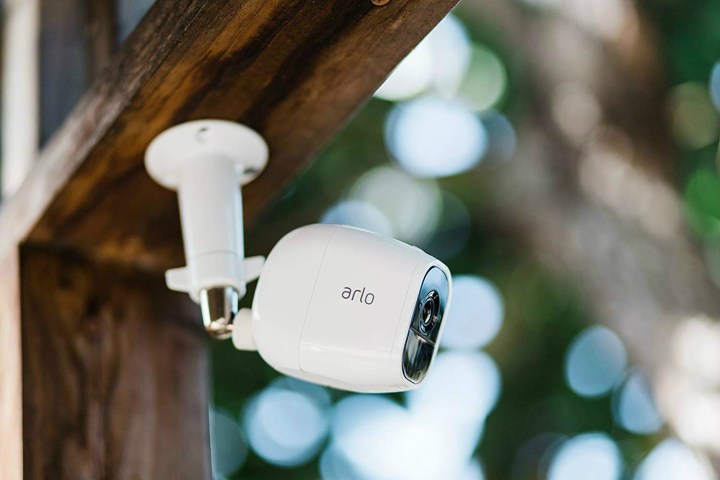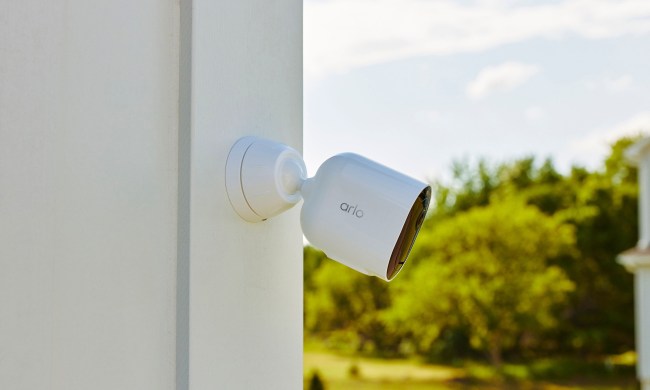If you’ve been shopping for the latest in home security systems, you’ve probably heard of or seen Arlo systems. One of the premier brands for wired and wireless security packages, Arlo’s cameras are a breeze to install, a cinch to control and customize, and reliable year-round, indoors and outdoors. The average home or business owner doesn’t have a lot of patience to look through the specs on a bunch of similar Arlo cams, though, so we’re making things easier for you.
Let’s look at three of the most popular Arlo models: The Arlo Pro, Arlo Pro 2, and Arlo Ultra. Here’s how they match up and which is best depending on your own needs.
Design

This is an easy one: All the Arlo cams have the same design! Despite a few minor differences from upgrade features, the cameras are hard to tell apart. All have the same oval-like design, with similar attachments that can be screwed into walls or ceilings as you want. All have rechargeable batteries and compact forms that make them easier to place in even cramped locations — although you can choose direct cable connections for power, which has its advantages. They’re also all weatherproof! There’s really no need to pick a winner here.
Camera

For sheer camera power, the Arlo Ultra is an easy winner. However, the other cams have strong features as well. Let’s take a look.
The Arlo Pro starts with a 720p resolution camera that can see up to 25 feet at night and has a 130-degree field of view. It can be activated by motion or sound to turn on when it senses activity. You can also zoom in when watching live feeds.
The Arlo Pro 2 upgrades to 1080p resolution, but keeps the 25-feet night vision and 130-degree field of view. It also comes with motion and sound sensors but adds extra customization that lets you adjust the sound detection levels more freely and choose up to three activity zones for the motion detection, so the cam has a better idea of what to look for (unfortunately, most of these features require a subscription to an Arlo Smart Plan). Digital zoom is also included, as well as a great feature called 3-Second Look Back. This captures surveillance footage three seconds before a motion event is triggered, allowing you to see the event from start to finish.
The Arlo Ultra, meanwhile, has a 4K camera with a powerful digital zoom, auto-tracking, great color night vision, and a 180-degree diagonal field of view. Obviously, the Ultra has, by far, the superior camera – although this also increases the price. The greater level of detail can be particularly useful for businesses, which tend to have more reasons to capture high-res images and zoom in if necessary.
Additional capabilities

All three Arlo cams come with built-in two-way audio, which means they have both a mic for listening and a speaker for communicating if necessary. They also all have sirens that can produce alarms over 100 decibels when necessary. The cams include a limited amount of onboard storage but do include an option to attach either a USB drive or SD card to the cam to offload footage if you prefer.
Really, the only significant difference between the added features is that the Ultra includes an integrated spotlight, something the other models don’t have. Again, this is a feature more suited toward businesses, but certain homeowners may appreciate a spotlight as well.
Smart compatibility

All Arlo cams can push alerts to your phone if they detect motion or sound, allowing you to tap into the cam remotely and watch or talk. The cams also save recorded footage to the cloud for a certain number of days, allowing you to access it again when necessary.
The three cameras are all compatible with Alexa and Google Assistant, so you can control them with voice commands when convenient (this works especially well on an Echo Show or Google Nest Hub). In terms of standout capabilities, the Arlo Pro 2 is somewhat unique in that it is the only cam that can also work with platforms like IFTTT and SmartThings, which makes it a tempting option for those with highly-integrated smart homes.
Pricing

Arlo costs are divided into two sections — buying the physical models and buying any Arlo plans. As we mentioned before, the cams have to include a base model, which adds to the price. While an Arlo plan isn’t required, it does enable some extra features and better storage. Without a plan, the Pro and Pro 2 still have a seven-day rolling record of video footage, which means it expires after seven days unless saved elsewhere. The Ultra model, on the other hand, comes with a free year of the Smart Premier plan, but after this, it can only save recordings for up to three days on just one cam.
Now that the details are out of the way, let’s take a look at pricing. Other packages may offer various discounts for adding more cameras to the set, but the packages below are a great starting point.
- Hub and one Arlo Pro: Around $250
- Arlo Pro 2 Camera System: Usually sells for $400
- Hub and one Arlo Ultra: Expect to pay between $300 and $350
Then, there are the plans. If you want to choose a plan, you can pick the Arlo Smart Premier or the Arlo Elite Plan. The Smart Premier plan increases your cloud footage rollover to 30 days, so videos stay a lot longer, and it adds artificial intelligence (A.I.) detection and customizable activity zones for the sensors (not available on the Pro model). You also get lock screen notifications, so alerts show up without you needing to unlock your phone or check your app. This plan costs $3 per month for a single camera or $10 for up to five cameras.
The Elite Plan is only compatible with Arlo’s 4K cameras, but like the Smart Premier tier, it offers up to 30 days of video storage. The Elite package also offers an online emergency call service that will help you get professional aid when you need it. This plan costs $10 for a single Arlo Ultra or $14.99 for up to five cameras.
Conclusion
If you need a more casual security systen with just one or two cams, choose the Arlo Pro 2 model. If you need a more elaborate or professional setup with multiple cameras — especially if you have a larger ongoing budget to work with, the Arlo Ultra is probably a better choice. Currently, there’s not much reason to opt for the Arlo Pro.


